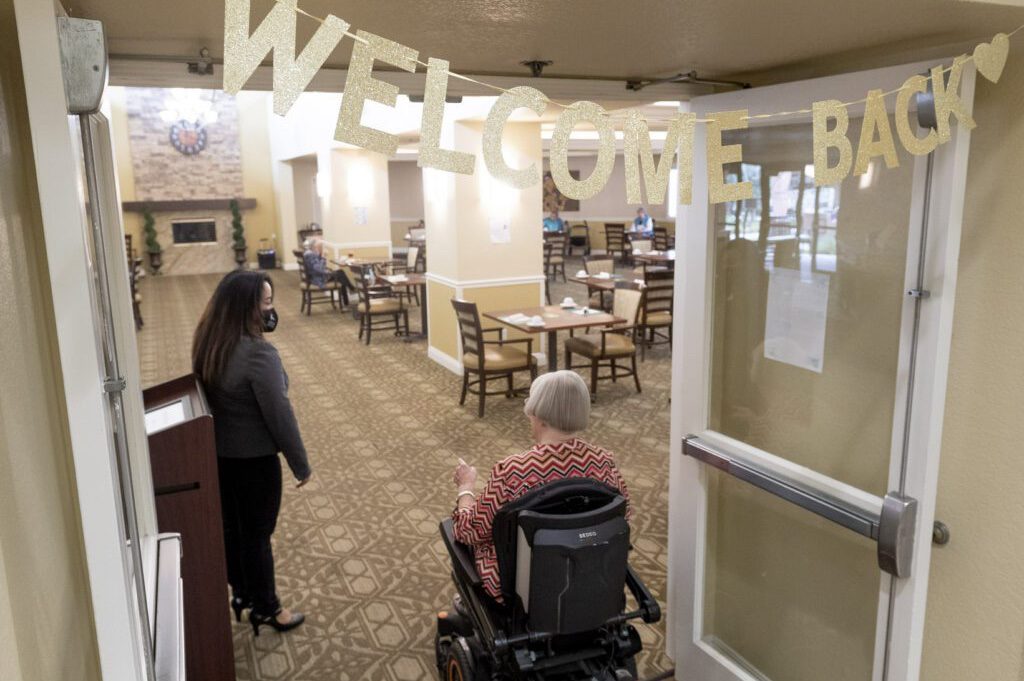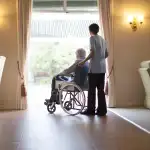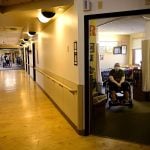Nursing homes were closing before the pandemic: more than 550 from June 2015 to June 2019, more shuttering each year than the previous one, affected by staffing shortages, high costs and a decline in occupancy.
But the coronavirus pandemic has hit nursing homes particularly hard, killing more than 186,000 residents and staff and pushing the industry into what experts have warned is its “worst financial crisis in history.” Now, only one in four of the country’s 15,600 nursing homes is confident it can survive the coming months, according to a recent survey.
If large numbers of nursing homes close, it’d be “a nightmare,” said Kimberly Posey, a gerontological nurse practitioner and assistant professor at Texas Christian University. Around 1.2 million people live in nursing homes, the majority of whom require some level of care.
“I really don’t know where they would go,” Posey said.
Facility owners, nurses and resident advocates agree that the current system for caring for older Americans is under too much stress. Mass closures would put a greater burden on hospitals as some residents need full-time medical care, force caregivers out of the workforce and lead to increased abuse. It would also mean nursing home workers, the majority of whom are women, would lose employment.
The vast majority of Americans would prefer to age at home, but the United States lacks the funds, personnel and political support to systematically shift from nursing homes to home care. Home care workers generally are paid less than minimum wage and lack benefits, but the care is still difficult to afford for many families. Although the Biden administration has proposed putting $400 billion toward home- and community-based services, which include medical and social programs that allow Medicaid beneficiaries to live in their home, that amount seems likely to be slashed.
So what will happen if nursing homes close? What can be done to help provide quality care for aging Americans, in nursing homes or their own homes? The 19th spoke to experts about what’s at stake.
Susan Reinhard has seen what happens when nursing homes close.
“It’s not a happy situation,” said Reinhard, senior vice president of public policy at AARP, an interest group for older people. “People don’t generally want to be relocated.”
But Reinhard, who oversaw nursing home closures as the deputy commissioner of New Jersey’s health and senior services department, knows sometimes it has to be done. Reinhard has seen declining occupancy rates in nursing homes that led to a lack of resources for basic safety and quality care. As conditions deteriorate past a certain threshold, the state has to step in to shut it down, she said.
Nursing homes are required by law to send a written notice to residents and their families at least 30 days before closing. The facility is then supposed to give family members agency in decision-making, but residents are sometimes relocated, even across state lines, without much say from families. Families have the option to remove their loved ones from facilities, but for those without family, it’s ultimately the nursing home’s responsibility — overseen by the state — to ensure residents find a new place to live, Reinhard said. Closures can be particularly devastating in rural areas, where other resources are harder to find, according to the National Advisory Committee on Rural Health and Human Services. Between 2010 and 2019, more than 110 rural hospitals closed, leaving many rural counties without key medical services.
If lots of American nursing homes were to suddenly close their doors, industry leaders and elder care experts worry that many people might find themselves without any options at all. Some worry that could even lead to more homelessness among older adults.
Nancy Kusmaul, associate professor of social work at the University of Maryland, Baltimore County, emphasized that home and community care could not currently completely replace nursing homes and other long-term care facilities.
“The home care system is not sufficient to handle the onslaught of people they would need,” said Kusmaul, a former nursing home social worker whose current research focuses on nursing homes, trauma-informed care and direct care workers. “If we’re talking about hundreds of nursing homes closing, they just don’t have the capacity to ramp up. Those systems also depend on accessible, available and affordable housing and family caregivers as backup.”
A complete shift to home care would also put undue burden on women, who are more likely to take on those responsibilities, Kusmaul said. Without proper paid family leave policies, the current infrastructure would likely deplete the women workforce — an echo of the mass exodus caused by the pandemic and subsequent loss of child care.
To avoid bleeding family resources, the long-term care industry needs to attend to its workforce, Reinhard said.
More than 1.5 million women lost or left their health care jobs, including in nursing homes, in the first month of the pandemic alone, many citing burnout. Now, about 94 percent of nursing homes and 81 percent of assisted living communities are facing a shortage of employees — and the majority of these say the situation has only gotten worse in 2021. And demand for care is likely to grow as the 85-plus demographic, which is also overwhelmingly women, is expected to more than triple by 2050.
Reinhard said many workers in nursing homes work for low wages, lack benefits and pick up part-time roles, often shuttling from facility to facility to make ends meet.
“Can we create career ladders?” she asked. “Can workers specialize? How can we support those direct care workers in ways that show they are respected? They shouldn’t have to jump from nursing home to nursing home, bouncing around, unable to get a full-time job.”
A move designed to protect residents from the coronavirus pandemic, which has been particularly deadly for older Americans, may exacerbate the shortage even further: Biden on Thursday announced that nursing home workers be be fully vaccinated against COVID-19 within 75 days to protect residents or risk losing Medicare and Medicaid benefits. The mandate applies to all federal employees of the executive branch, including federal agencies and members of the armed services.
While 78 percent of nursing home residents are fully vaccinated nationally, just 56 percent of nursing home workers have been vaccinated — falling short of an industry goal of at least 75 percent, according to AARP, which tracks vaccination rates in each state.
Some facilities already struggling to hire and retain workers are concerned the mandate may lead to even more resignations or firings.
Sheila Molony, a nursing professor at Quinnipiac University, said we need to think outside of what’s been done to fix an industry with structural flaws.
“People need more choices,” Molony said, whose own mother was able to choose to go to a nursing home, move back into the community and then return to the nursing home as her health declined. The opportunity to change her mind was made possible by a program, similar to ones found in dozens of states, designed to ensure Medicaid resources follow a resident — both in and out of nursing facilities and other long-term care institutions.
“We have not wanted to think about long-term care as a society,” Molony said. “It’s important that we don’t see the community as a panacea and nursing homes as always worse. I think we should prioritize quality of life and helping people to live.”
One potential solution, she said, is paying family members to provide care.
“This is something we have not invested in, and I think we could consider,” Molony said. “We could also provide more support to those who want to hire their own caretakers. The younger disability community has been doing this for years. How do we hire, fire and generally manage self-directed care?”
Meegan Lambert, assistant professor of occupational therapy at North Central College, emphasized the need for a major shift in how Americans plan — or don’t plan —for aging and any complications that entails.
“People don’t realize all that goes into the day-to-day care,” Lambert said, noting that a typical nursing home has a dietary staff to prepare three hot meals daily, nurses to administer medications throughout the day and others to facilitate social activities. “One or two family members might have to do what it takes a whole village to do. They can quickly become burnt out with trying to meet the emotional, social and physical needs of their loved one.”
She has seen some creative alternatives: families hiring someone to come to the house every day to care for an aging adult; a handful of older adults forming a mini-nursing home — sharing a house and hiring a small medical staff to bathe, cook and coordinate activities; and community organizations delivering meals to homebound adults.
“When we think about retirement planning, we really have to think and plan as if we’re going to college,” Lambert said. “We think we’re going to retire in our homes, bills are going to be low and we will just cut costs. That’s not the reality. If we do have to go to a facility, whether it’s independent or assisted living, the average out-of-pocket cost is more than $3,000 per month.”
Regardless of the long-term care industry’s trajectory, Kusmaul said there will always be people with intense needs who subsist on nursing home-level care.
“As individuals we want the best, right care for our mother, father, uncle and aunt — but as a society we don’t always put value on what it would take to provide for everyone’s mother, father, uncle and aunt,” Kusmaul said.







